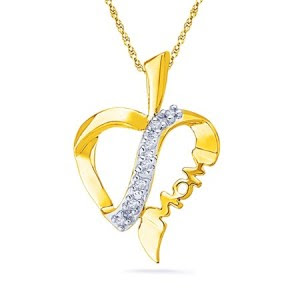5 Ways to Know When Affordable Diamond Rings are a Scam
Diamond rings are synonymous with beauty, luxury, and a hefty price tag. As you search for a discount on diamond rings, you may find jewelers promising amazing deals with prices that seem too good to be true. But if they seem too good to be true... they probably are. Unfortunately, many in the gem industry will resort to misleading claims, deceptive advertising, and even outright scams. Let the buyer beware when dealing with “discount jewelers” and “diamond wholesalers.” Here are five warning signs to look for when shopping for affordable diamond rings:
#1: Low Cut Grade
A diamond’s “cut grade” is one of the main determinants of both its beauty as a work of art and its value on the jewelry marketplace. A well-cut diamond will reflect an astonishing amount of light back to the eye of the viewer, leading to the sparkle and shine that gives the stone its distinctive appearance. A poorly cut diamond will appear dull or glassy, with dark patches where light is not reflecting properly. If you see a heavily discounted diamond, be sure to check that the price isn’t just a reflection of the gem’s low cut grade. Buying a poorly cut diamond on the cheap isn’t really saving you any money because you get exactly what you pay for—such diamonds are worth markedly less.#2: Lab-Created Gems
This one’s a little trickier than cut grade because, to the untrained eye, a lab-created diamond may look just as beautiful as the real thing, and there are a couple of things to consider whether or not lab-created diamonds are worth buying. First, although they are chemically and visually very similar to natural diamonds, lab-created gems just aren't the same thing. Natural diamonds form in the earth’s mantle over the course of a billion years or more, (Diamonds aren’t just forever, they take forever.) while lab-created diamonds synthesize in a laboratory setting by gemologists over the course of a few hours or days. Because they can be created on demand, they're less valuable than natural diamonds. If you see lab-created diamonds on sale for 20-40% less than natural diamonds, you're not getting a discount or buying gems for less than they're actually worth. You're simply paying the market price for a disingenuous product.#3: Imitation Diamonds
There are plenty of diamond substitutes out there that look somewhat similar to the most desired and beautiful of the precious stones, but are definitely not the same thing. Unlike lab-created diamonds, imitation diamonds are not the same, chemically, as natural diamonds. Imitation diamonds are also easily distinguished from genuine diamonds by anyone with passing knowledge of a true diamond’s visual appearance. Far less valuable than both, natural and lab-created diamonds, imitation diamonds are usually made from cubic zirconia, high-leaded glass (i.e., rhinestones), or moissanite.All of these alternative substances are significantly less hard than a real diamond. As a consequence, imitation diamonds suffer a much higher rate of wear and tear over time. In other words, imitation diamonds won’t last nearly as long as real diamonds. Imitation diamonds also have a different density, refractive index, and dispersion effect than real diamonds. These differences make it more difficult for light to bounce off the jewel, meaning it will have less fire and brilliance than an actual diamond. Honest retailers will clearly label products as cubic zirconia or another alternative substance, but be on the lookout for unscrupulous vendors offering “affordable diamonds” that are actually not diamonds at all.
#4: Blood Diamonds
You may be able to find diamonds available for sale at a steep discount that are genuine. However, these diamonds may be sourced unethically. Blood or “conflict” diamonds are precious stones mined from areas of Africa ravaged by civil war or other violent conflicts. If you buy a blood diamond, you are indirectly funding warlords who often rely on child soldiers and terrorize civilians. Almost fifteen years ago, the Kimberley Process was established to help consumers avoid purchasing blood diamonds. When you buy diamonds, always check to see if the retailer is complying with the Kimberly Process and has made every effort to ensure their diamonds are sourced ethically.#5: Lack of Certification
Proper documentation is a crucial part of avoiding scams when shopping for affordable diamond rings. If a jeweler does not provide you with legitimate certification that demonstrates your diamond is authentic, it is very likely that you are being ripped off. A certified diamond is a jewel that was examined and graded by gemologists at a reputable gemological laboratory. The most well-known and trustworthy laboratories that grade and certify diamonds include:- The Gemological Institute of America (GIA)
- The American Gem Society (AGS)
- The European Gemological Laboratory (EGL)
- The International Gemological Institute (IGI)
- The Hoge Raad voor Diamant (HRD)
You can be sure you aren’t buying a diamond with a low cut grade, a lab-created diamond, or a fake diamond if the diamond’s certification confirms the stone is genuine. You should also ask for documentation proving that the diamond is conflict-free. By doing your homework and shopping with a trusted jewelry retailer, you can have peace of mind about your next diamond purchase.
If you are in search of latest gold necklaces for women and cross necklaces for women, then please contact us in the comment section.




Comments